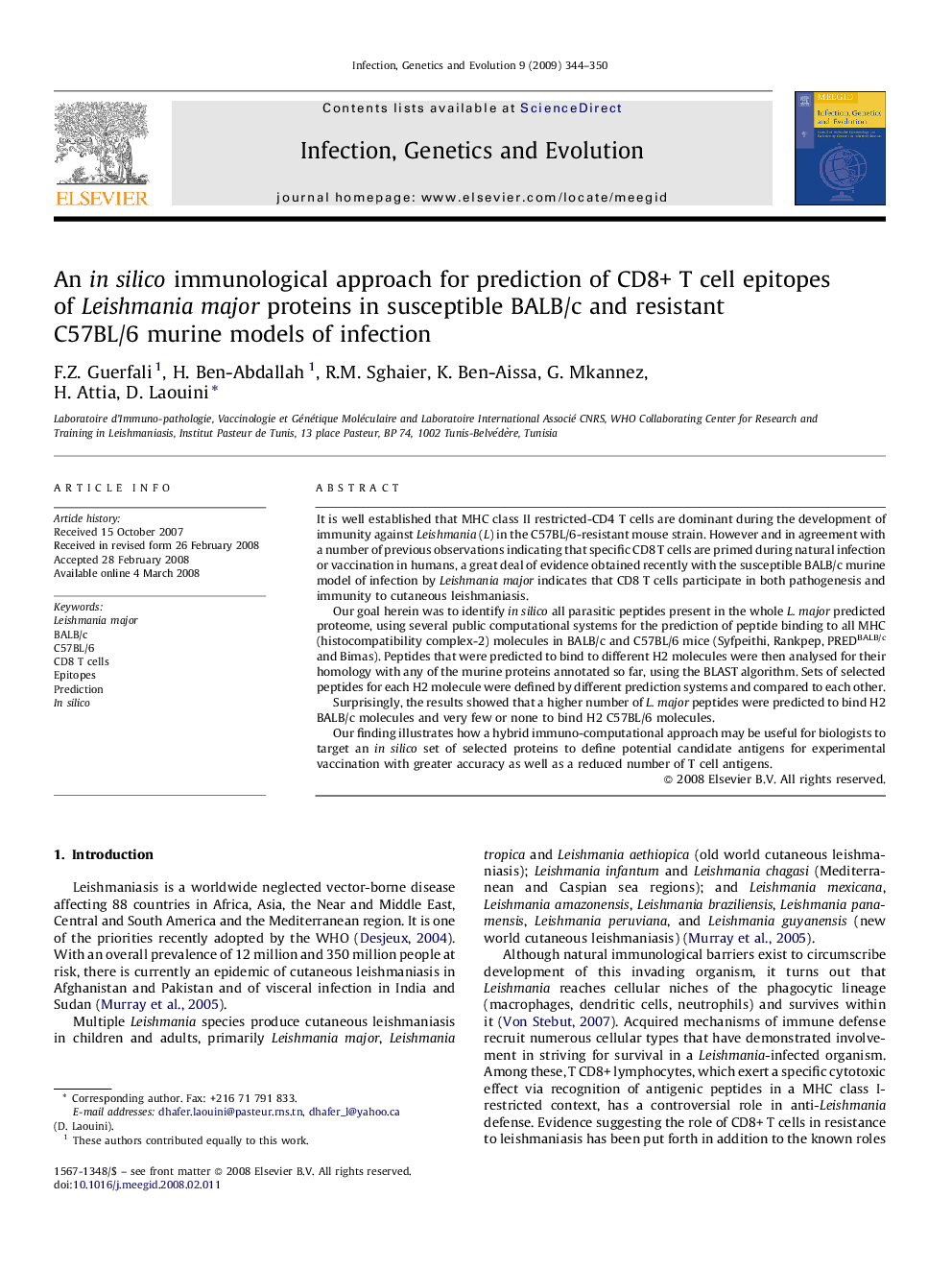| کد مقاله | کد نشریه | سال انتشار | مقاله انگلیسی | نسخه تمام متن |
|---|---|---|---|---|
| 2823387 | 1161385 | 2009 | 7 صفحه PDF | دانلود رایگان |

It is well established that MHC class II restricted-CD4 T cells are dominant during the development of immunity against Leishmania (L) in the C57BL/6-resistant mouse strain. However and in agreement with a number of previous observations indicating that specific CD8 T cells are primed during natural infection or vaccination in humans, a great deal of evidence obtained recently with the susceptible BALB/c murine model of infection by Leishmania major indicates that CD8 T cells participate in both pathogenesis and immunity to cutaneous leishmaniasis.Our goal herein was to identify in silico all parasitic peptides present in the whole L. major predicted proteome, using several public computational systems for the prediction of peptide binding to all MHC (histocompatibility complex-2) molecules in BALB/c and C57BL/6 mice (Syfpeithi, Rankpep, PREDBALB/c and Bimas). Peptides that were predicted to bind to different H2 molecules were then analysed for their homology with any of the murine proteins annotated so far, using the BLAST algorithm. Sets of selected peptides for each H2 molecule were defined by different prediction systems and compared to each other.Surprisingly, the results showed that a higher number of L. major peptides were predicted to bind H2 BALB/c molecules and very few or none to bind H2 C57BL/6 molecules.Our finding illustrates how a hybrid immuno-computational approach may be useful for biologists to target an in silico set of selected proteins to define potential candidate antigens for experimental vaccination with greater accuracy as well as a reduced number of T cell antigens.
Journal: Infection, Genetics and Evolution - Volume 9, Issue 3, May 2009, Pages 344–350